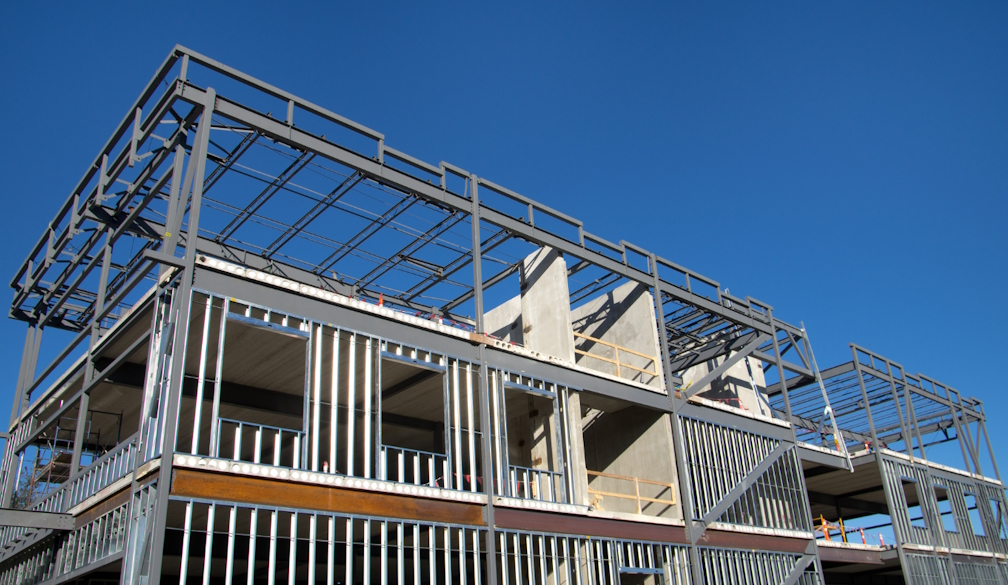Commercial vs Industrial Construction: 5 Key Differences

Not all construction projects are equal. Commercial and industrial construction have distinct purposes, requirements, challenges, and characteristics. Understanding the key differences between commercial and industrial construction is essential for all stakeholders in the building industry, from project managers to investors. Here are five crucial distinctions between commercial and industrial construction.
Purpose and Function
The primary difference between commercial and industrial construction lies in their intended use. Commercial construction focuses on buildings designed for business activities directly engaging with the public, such as retail stores, office buildings, hospitals, schools, distribution centres, hotels, and restaurants. The design and functionality of commercial buildings are centred around customer experience, aesthetics, and accessibility.
On the other hand, industrial construction is geared towards facilities that support manufacturing, production, storage, and logistics, including factories, warehouses, power plants, and distribution centres. Industrial buildings prioritise functionality, durability, and efficiency to accommodate heavy machinery, large-scale operations, and robust workflows.
Design and Architectural Requirements
Commercial buildings often have more elaborate architectural designs to attract and serve customers. These projects frequently include detailed finishes, large windows, and commercial doors — all elements of commercial projects must be durable and functional without compromising the aesthetic features to create an inviting atmosphere. Interior layouts are designed for ease of movement, with consideration for customer and employee comfort.
In contrast, industrial buildings focus on practical and efficient design. The architectural requirements emphasise structural integrity, space optimisation, and the accommodation of heavy equipment. Buildings typically have high ceilings, wide-open spaces, and reinforced structures. With logistics being more important than aesthetics, automation for efficiency and enhanced security is one of the major key features in industrial settings.
Building Codes and Regulations
Both commercial and industrial construction projects must adhere to stringent building codes and regulations, but the specifics can vary significantly. Commercial construction must comply with regulations related to public safety, accessibility, and zoning laws that accommodate foot traffic and customer access.
Industrial construction must comply with safety and environmental regulations. It often involves handling hazardous materials and controlling emissions. These regulations are created to ensure worker safety, protect the community, and minimise environmental impact.
Construction Materials and Methods
The materials and construction methods used in commercial and industrial projects differ based on the specific needs of each type of building. Commercial buildings often use materials that balance aesthetics with functionality, such as glass, steel, and decorative finishes. The construction methods may include more detailed interior work to create a pleasant environment for customers and employees.
Industrial construction typically uses more robust materials to withstand heavy use and harsh conditions. This includes reinforced concrete, steel beams, and metal cladding. The construction methods focus on creating durable and low-maintenance structures supporting industrial operations. For example, flooring in industrial buildings is often made of heavy-duty concrete to support the weight of machinery and vehicles.
Maintenance and Operational Considerations
Maintenance and operational considerations also differ significantly between commercial and industrial buildings. Commercial properties require regular upkeep to maintain aesthetic appeal and ensure customer comfort. This includes cleaning, landscaping, and periodic upgrades to fixtures and fittings. Facilities management practices in commercial settings aim to create environments that are welcoming and efficient for customers and employees.
In industrial facilities, maintenance is more focused on the operational integrity of machinery and equipment. Regular inspections, preventive maintenance, and compliance with safety standards are critical to ensure continuous operation and safety. Industrial buildings often require specialised maintenance practices tailored to the specific equipment and processes involved.
Conclusion
Understanding the differences between commercial and industrial construction is essential for anyone in the building industry. From the purpose and design of the buildings to the materials and regulatory requirements, each type of construction has its own set of unique characteristics and challenges. Whether planning a new retail space or an industrial facility, knowing these key differences can help ensure your project meets its intended goals and operates efficiently. By focusing on the specific needs and functionalities of commercial and industrial buildings, you can create practical and successful spaces in their respective domains.







